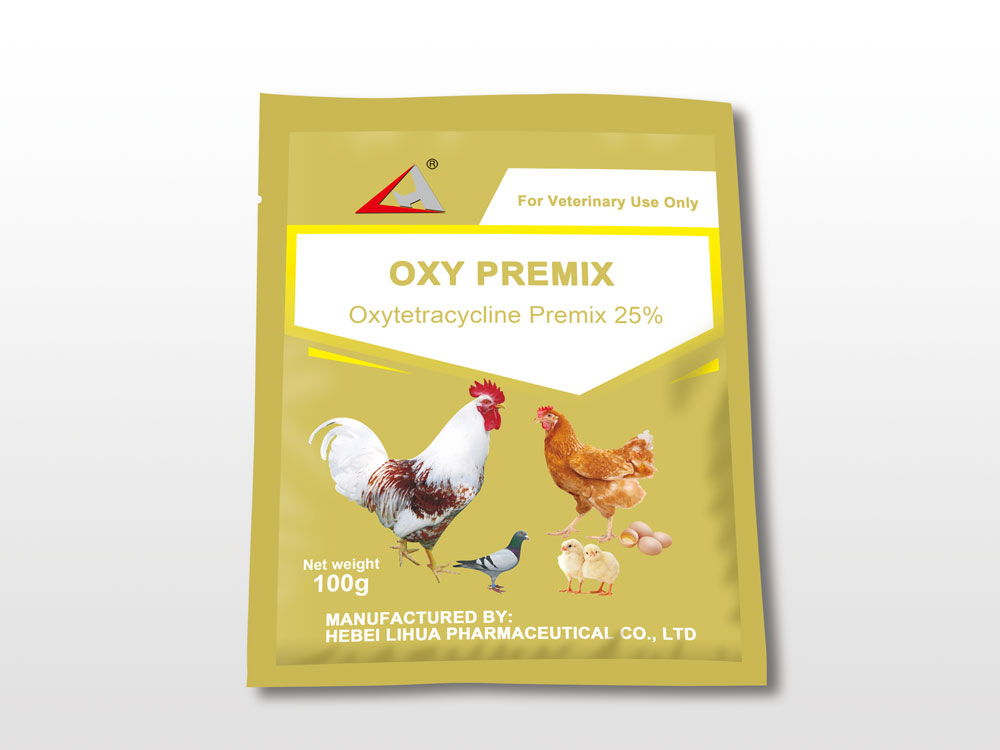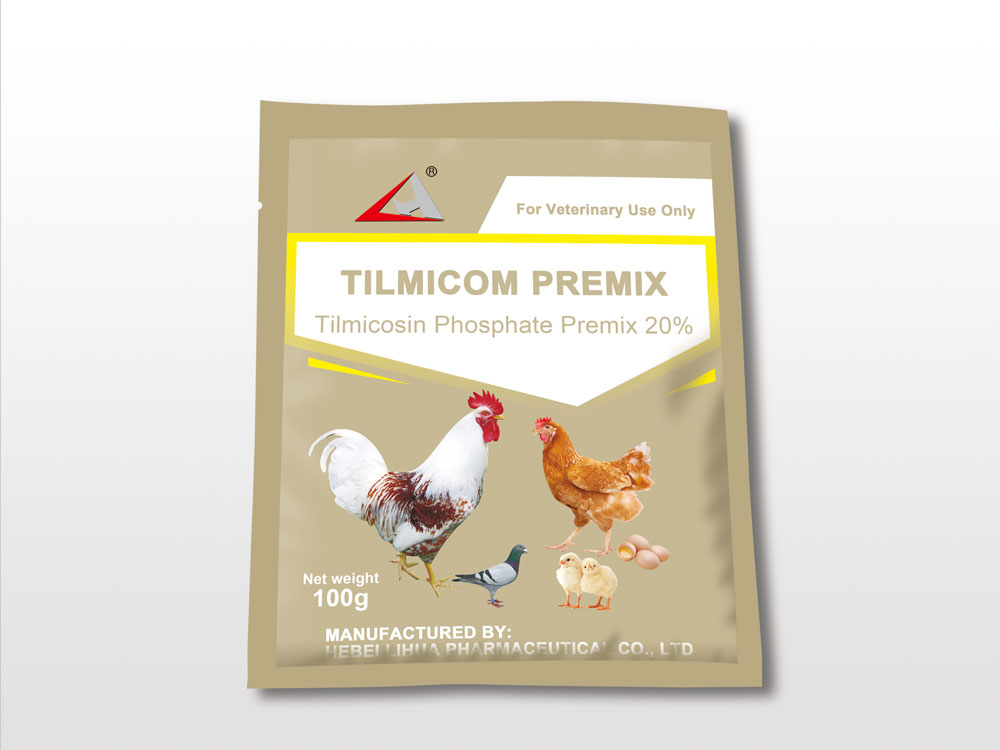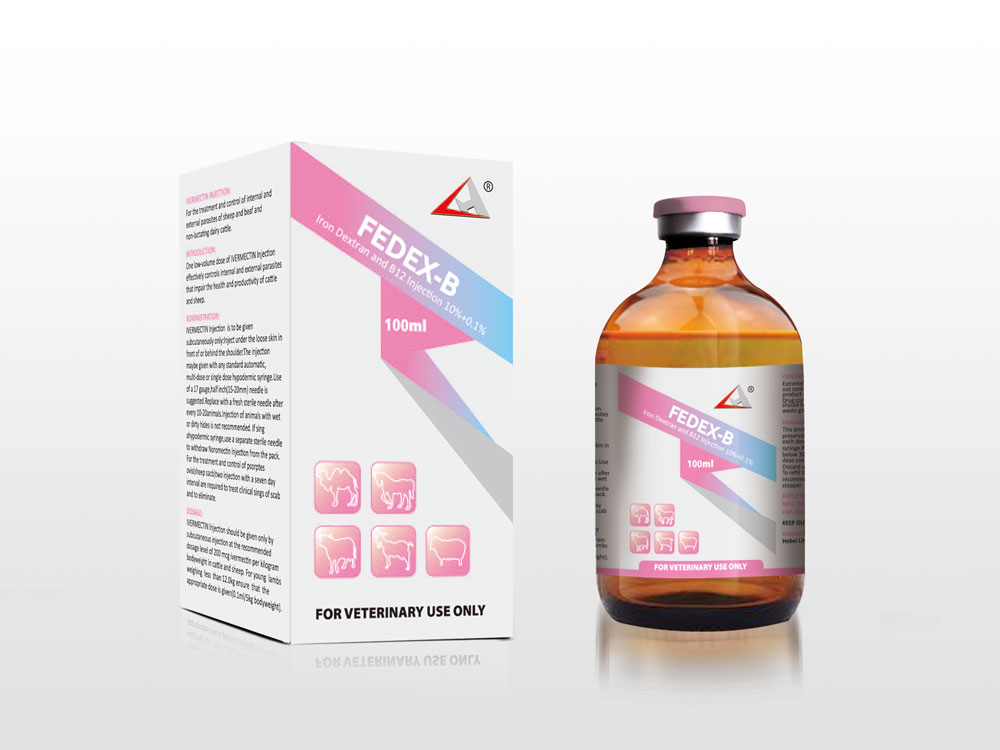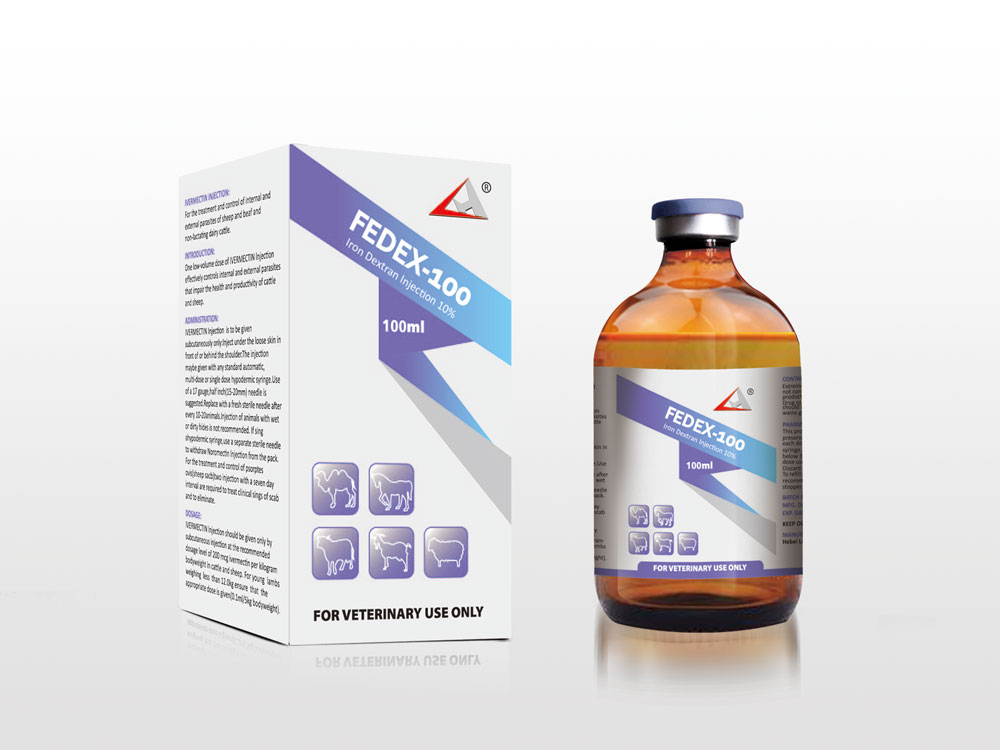Wholesale Price China Oxytetracycline Powder - Oxytetracycline Premix 25% – Lihua
Wholesale Price China Oxytetracycline Powder - Oxytetracycline Premix 25% – Lihua Detail:
Oxytetracycline belongs to the group of tetracyclines and acts bacteriostatic against many Gram-positive and Gram-negative bacteria like Bordetella, Bacillus, Corynebacterium, Campylobacter, E. coli, Haemophilus, Pasteurella, Salmonella, Staphylococcus and Streptococcus spp. and Mycoplasma, Rickettsia and Chlamydia spp. The mode of action of oxytetracycline is based on inhibition of bacterial protein synthesis. Oxytetracycline is mainly excreted in urine and to a lesser degree in bile and in lactating animals in milk.
Indications
Gastrointestinal and respiratory infections caused by oxytetracycline sensitive bacteria like Bordetella, Bacillus, Corynebacterium, Campylobacter, E. coli, Haemophilus, Pasteurella, Salmonella, Staphylococcus and Streptococcus spp. and Mycoplasma, Rickettsia and Chlamydia spp. in calves, goats, poultry, sheep and swine.
Contra-indications
Hypersensitivity to tetracyclines.
Administration to animals with an impaired renal and/or liver function.
Concurrent administration of penicillines, cephalosporines, quinolones and cycloserine.
Administration to animals with an active microbial digestion.
Side Effects
Discoloration of teeth in young animals.
Hypersensitivity reactions.
Dosage
For oral administration:
Calves, goats and sheep : Twice daily 1 gram per 20 – 40 kg body weight for 3 – 5 days.
Poultry and swine : 1 kg per 2000 litre drinking water for 3 – 5 days.
Note: for pre-ruminant calves, lambs and kids only.
Withdrawal Times
- For meat:
Calves, goats, sheep and swine : 8 days.
Poultry : 6 days.
For Veterinary UseOnly , Keep out of reach of children
Product detail pictures:
Related Product Guide:
carry on to boost, to guarantee products excellent in line with market and consumer standard specifications. Our enterprise has a quality assurance system are actually established for Wholesale Price China Oxytetracycline Powder - Oxytetracycline Premix 25% – Lihua , The product will supply to all over the world, such as: Sao Paulo, US, Iraq, Customer's satisfaction is always our quest, creating value for customers is always our duty, a long term mutual-beneficial business relationship is what we are doing for. We are an absolutely reliable partner for yourself in China. Of course, other services, like consulting, can be offered too.
We are a small company that has just started, but we get the company leader's attention and gave us a lot of help. Hope we can make progress together!
You may also be interested








